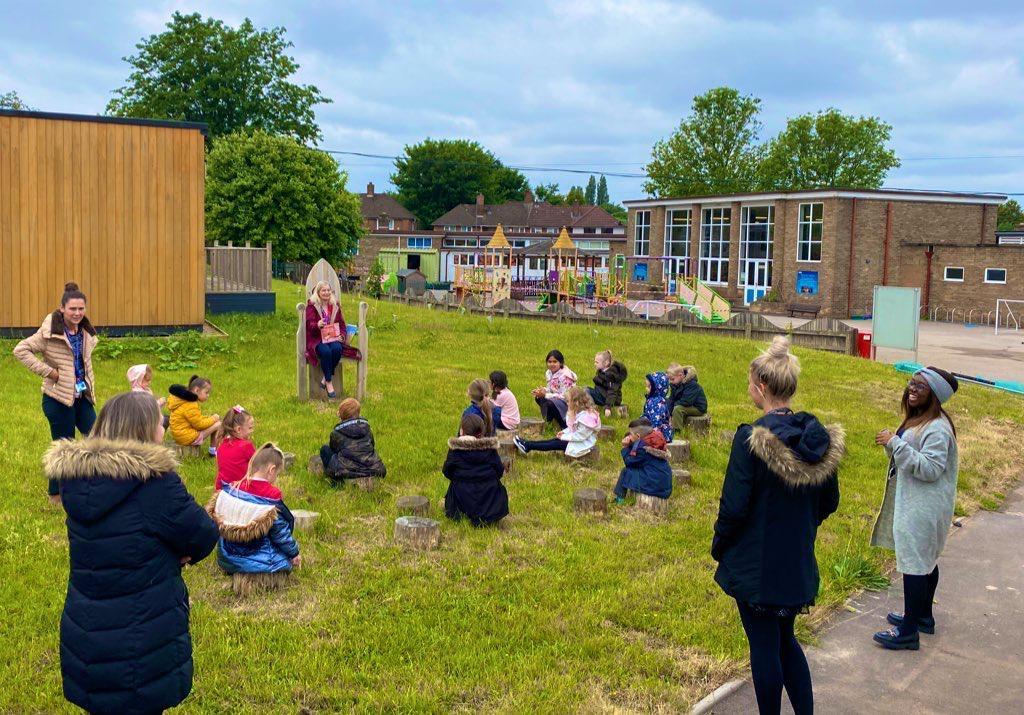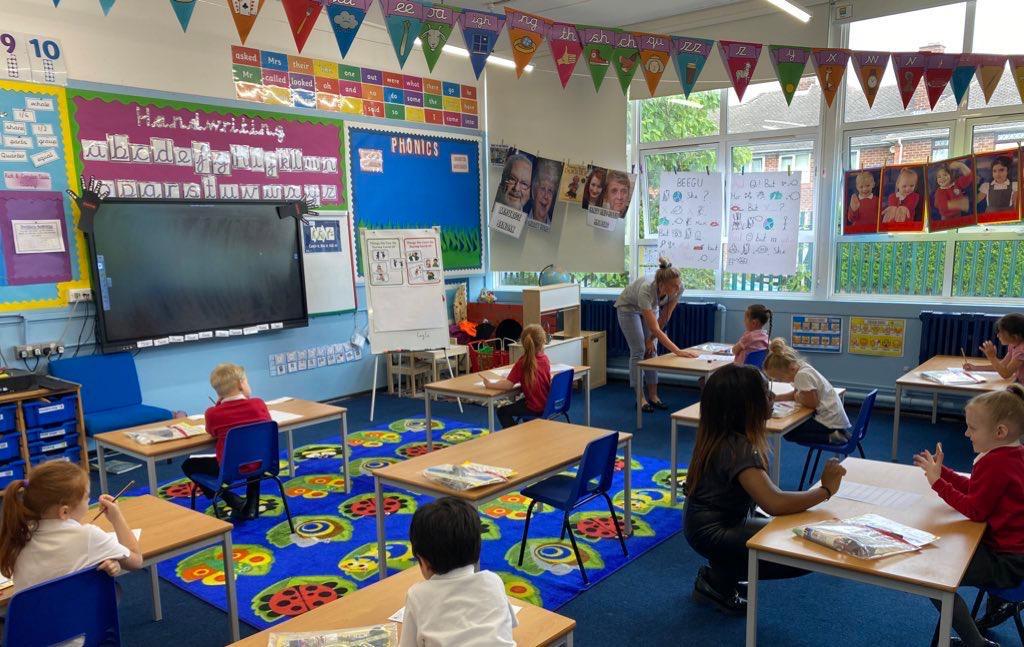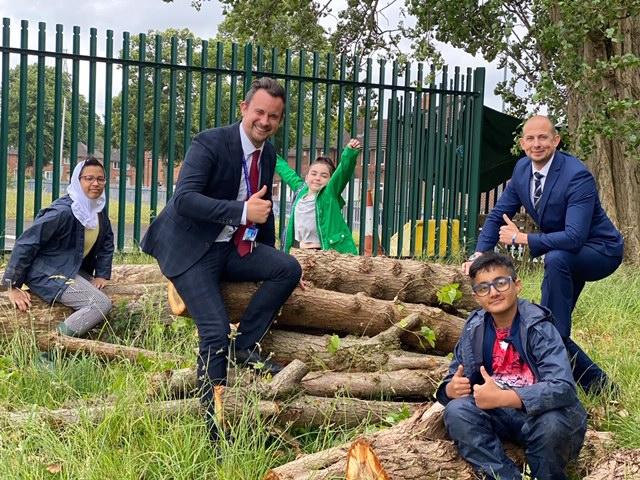‘We can’t magic up new classrooms’: Inside schools trying to cope as coronavirus turns into educational crisis
Learning bubbles, temperature checks and taped-off play equipment are new normal as teachers battle valiantly with ‘impossible’ logistics of full reopenings (but pupils remain undaunted), finds Colin Drury


Lunchtime at Lea Forest Primary Academy in Birmingham and 11-year-old Riley Peace is looking somewhat perturbed. The youngster says he is happy to be one of the select 90 reception, year 1 and year 6 pupils who have been allowed to return to the 505-student school after almost three months of coronavirus lockdown.
But break times leave him missing friends who are yet to return. “We don’t have enough people for a football game,” he explains. “No good.”
A friend has other preoccupations. The school, in the city’s Kitts Green area, has postponed this summer’s year 6 graduation ball. “There should be a party when you leave a school,” he says, reasonably enough.
Such are the apparent concerns and conversations of many children now returning to education in our coronavirus age.
Here at Lea Forest, just over a week after it partially reopened, pupils seem to have accepted with barely a batted eyelid the new normal of morning temperature checks, class sizes of just 10 (a “dream ratio” in other times, notes deputy head Simon Taylor) and single desks spaced two metres apart. No one yet, says headteacher Craig Clarke, has had to be told off for having a cheeky slide or swing in the now taped-off outdoor play area.
Youngsters here appear happy, engaged and, most pertinently perhaps, blissfully unaware – or, at least, blissfully undaunted – by the fact they are now part of a generation at the centre of arguably the biggest schooling challenge ever faced in the UK. Namely, how do you provide a normal education in an age of Covid-19; of social distancing and of a virus that can live on door handles, dinner trays and Julia Donaldson books?
“The thing about kids is they’re adaptable,” says Clarke. “So, they will take on what is happening and make it routine.”
He doesn’t say a “but” because he is – as is the way of good headteachers – unerringly positive. Yet one hangs heavy in the air. It is this: while about 55 per cent of all primary schools have reopened for limited numbers over the past fortnight, the idea that they could now take back all students while sticking to current coronavirus safety guidelines is effectively impossible.
Education secretary Gavin Williamson finally accepted this reality last Tuesday when he announced schools would not, as previously stated, be compelled to fully reopen until September. Yet that in itself has only kicked the problem down the track. Williamson himself offered no hint at a roadmap or possible solutions.
“At the moment, I’m crossing my fingers that by September things have somehow changed,” says Clarke, sat with Taylor in his office, a couple of boxes of PPE on the floor. “That somehow we’re back to a kind of normality.”
But if, as seems all but certain, we are still living with Covid-19? How could Lea Forest possibly reopen to all 505 pupils when its 20 classrooms could only hold an absolute maximum of 15 pupils at a time?
There is some tussling over this question. The school is one of 58 operated by Academies Enterprise Trust and, in the apparent ongoing absence of government leadership, its collective headteachers will be holding virtual meetings to discuss such a scenario.
Logistically, says Taylor, students may have to attend only part time. “You would have to consider a mixture of online and classroom learning,” he tells The Independent. “One hypothetical [would be] having students in groups with the groups alternating each week between being in school and learning at home.”
Putting aside what that might mean for working parents – 60 per cent of pupils here come from deprived households – what impact would that have on children?
“You can’t beat being in a classroom with a teacher so there would be an impact if that is long-term,” returns Clarke. “Our online offer here is really strong but it’s very difficult to recreate that face-to-face time. So, nationally, there is a massive emphasis on reading and phonics in schools which is not something that can necessarily be done online.”

These are questions, of course, being wrestled with by headteachers across the UK. Concerns are increasingly growing – across the political spectrum – that mishandling is turning a health and economic crisis into an educational one.
Justine Greening, a former Conservative education secretary, has called the government’s absence of guidance “untenable”. Steve Chalke, the founder of the 52-school Oasis Academy Trust, has gone further. The Department for Education, he says, has effectively said “we’ve run out of ideas – we don’t know what do, over to you”.
On Thursday, meanwhile, Hamid Patel, chief executive of the Star Academies group and Ofsted board member, became one of the most senior educationalists to call out a lack of leadership from the top.
With current social-distancing guidelines, he said, less than 50 per cent of pupils would be able to attend most schools. “To reopen in September, open and honest discussions are needed,” he urged. “The clock ticks inexorably onwards.”
So desperate have some headteachers been to improvise solutions, they have scoped out the idea of using hotel conference suites, church rooms and village halls.
Lorraine Tonks, principal at Chetwynd Primary Academy, in Beeston, Nottingham, is among them. She enquired about turning a local community hall into a temporary second site but soon realised, she says, “it was impossible – unless you have a tree to grow extra staff on too”.
It is a point supported by Sir Jon Coles, head of the United Learning academy trust. If all classes were to be reduced to 15 pupils, he says, some 250,000 new teachers would need to be hired.
Tonks herself has so far been unable to reopen Chetwynd – usually a 420-pupil school – even to reception, year 1 and year 6 pupils.
That’s because they have so many key worker and vulnerable children – 154 in total – that their 13 classrooms are already at full capacity. The dinner hall has had to be turned into a makeshift staffroom to allow teachers to socially distance. Children now eat lunch delivered to their desks.
All of which means the school – a member of the Spencer Trust – could not open in September under current guidelines, even using the hybrid model being considered by Lea Forest.
“If you assume all key workers and vulnerable children still have to come in full time,” says Tonks, “that’s our capacity entirely taken up. We would need to double our school size to take any more.”
Does the government understand the scale of the problem? “No,” she responds simply. “Perhaps the private school they went to had huge amounts of unused space but in the real world we can’t magic up classrooms.”
Her main fear is that, having had no real guidance up to now, none will come ahead of September either. If they follow the same pattern as over the past three months, she suggests, “we will get a directive for September on 31 August”.
There are, in short, no easy solutions here.
Certainly, in a statement to The Independent, the Department for Education doesn’t appear to offer any. “Being in school is vital for children’s education and their wellbeing, which is why we’re working to get all pupils back into classrooms by September,” a spokesperson says. “We have worked constructively with schools, councils and unions for the last 11 weeks, and that will continue as we seek to bring all children back.”

Back at Lea Forest it’s coming up to home time for some pupils, and parents are stood in line at the entrance, each two metres apart according to markings made on the pavement. Their children are then brought out to them in turn. At full capacity, such a system would transform the end of the day into a process that lasted half the afternoon.
Clarke nods at this suggestion.
In his office, neither he nor Taylor want to be drawn too heavily on the government’s handling of the situation.
In an ideal world schools would “respond to guidance”, says Taylor diplomatically. But, over the last few weeks, “we have had to be several steps ahead of that guidance”.
All the same, the two remain enthused about seizing any opportunities: the way the children have responded to new outdoor classes makes them think they should expand such teaching even when back to normality, while parents, they say, are more engaged with their children’s learning than either have ever known before.
More crucially, perhaps, the shift to greater online learning is something they believe will stand students in good stead in a world which is increasingly digital and workplaces ever more remote.
“The most important thing,” says Clarke, “is whatever happens we do everything we can to keep giving children the absolute best educational offering possible.”
Join our commenting forum
Join thought-provoking conversations, follow other Independent readers and see their replies
Comments